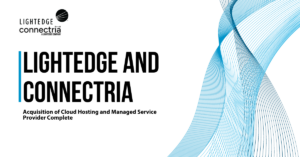Last year’s major Amazon Web Services (AWS) outage, along with a Microsoft Azure outage two months prior, exposed vulnerabilities of public cloud – especially when it dominates an organization’s cloud environment.
Depending on a single cloud environment for compute, critical applications, storage, and backup is the proverbial “putting all your eggs in one basket.” When the basket falls apart, everything breaks.
While using multiple Availability Zones and Regions within a public cloud offers some level of redundancy and failover capabilities – which refers to the ability to switch automatically to a reliable backup system – it often doesn’t provide your organization total protection from an outage.
Some of the critical core services that public clouds provide are centralized within a particular region and an outage there can have cascading effects on services running in other regions.
A Multi-Cloud Approach Offers the Best Protection
The best strategy to ward off potential problems from the risks of public cloud is a multi-cloud approach. The reason? It spreads risk while increasing the potential for maintaining full operations when there’s an outage or incident. Public cloud is often a significant part of this approach. Notice that I put emphasis on “part.”
Should there be an outage, like what happened with AWS, workloads can switch over to a different cloud environment. There would also be multiple backups to restore data and function quickly and cost effectively.
In news coverage of the AWS event Naveen Chhabra, a Senior Analyst with Forrester, stated “Crafting a complex online service that can be easily shifted from one provider to another in case of emergency is far from simple.” Building, managing, and maintaining a multi-cloud infrastructure requires expertise with multiple cloud platforms.
The article goes on to report how customers with a single-cloud strategy can be caught off guard when they want to extract data, either to restore data or to move to a competitor, since they may face egress fees.
A resilient multi-cloud strategy that includes a cloud storage option – such as LightEdge Object Storage for cloud backup – is a good choice.
Outages are going to happen. The fact that they have happened to dominant players, such as AWS and Azure, shows that no single cloud environment is infallible and that a multi-cloud strategy is essential.
Click here to learn more about how LightEdge can help you choose the most secure and compliant cloud and hosting solutions to suit your business needs.




